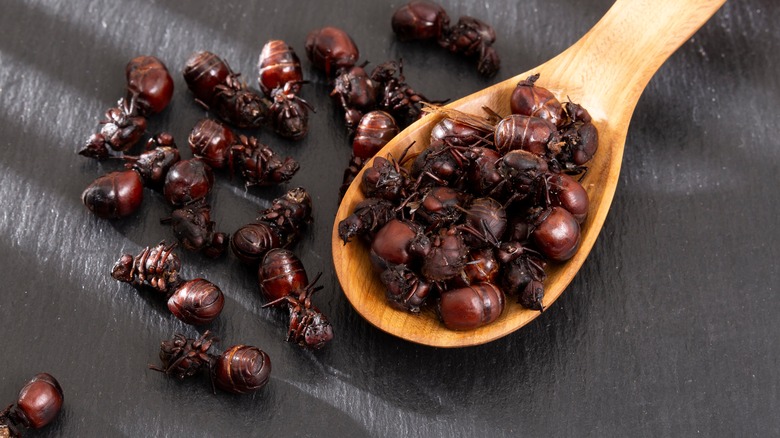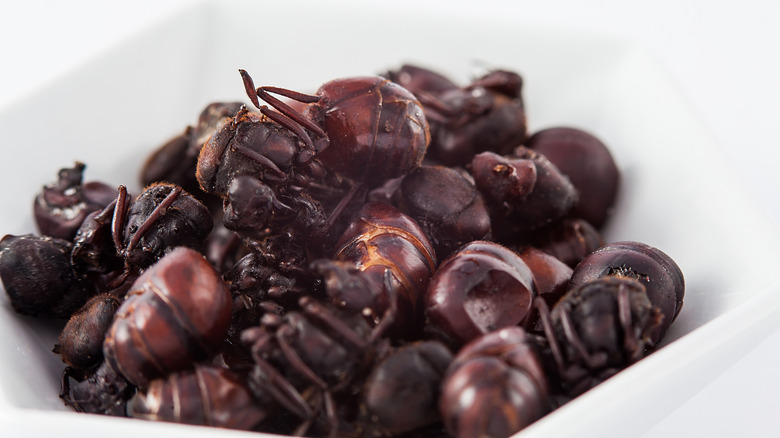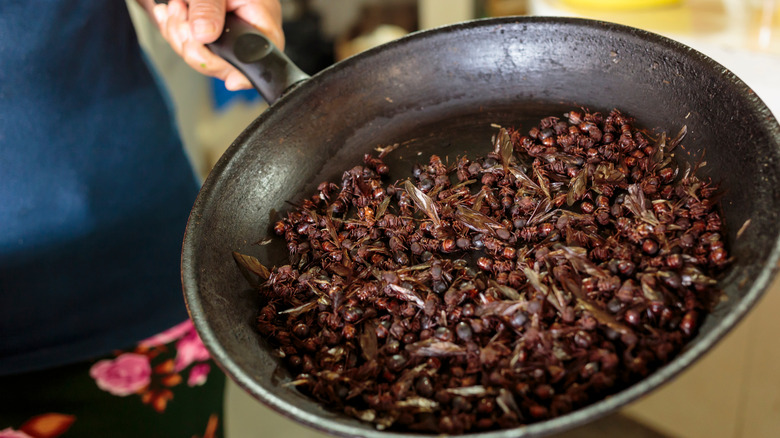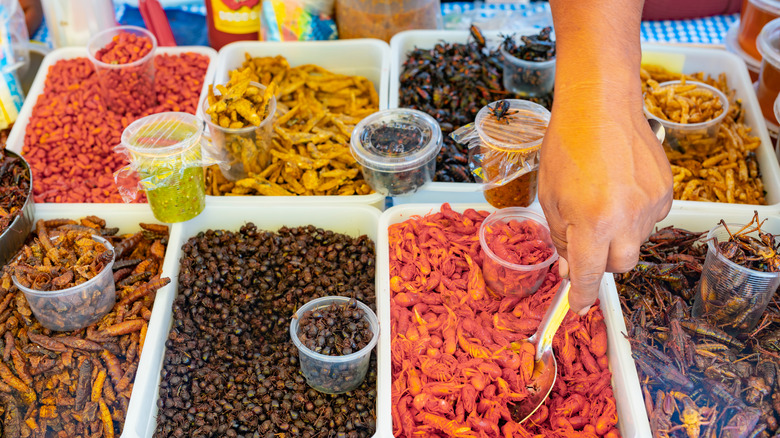Big-Butt Ants Are A South American Delicacy
Bugs are everywhere, and they do a whole lot of good for us! Bees spread pollen and make raw honey, and a praying mantis will fight off grasshoppers and other not-so-friendly garden pests. We benefit greatly from all kinds of bugs, but we can use them for another thing as well — something that's good for the planet and our stomachs. We can eat them! The practice of eating insects may be old, but it isn't dying out! Healthline states that as the world experiences food shortages and environmental devastation, many foodies are now focused on eating sustainably, and insects are a large part of that because they have a low impact on the environment, need less food and resources than other animal products, and are a pretty good source of protein and antioxidants.
Eating insects isn't close to being a new concept, our ancestors have been chowing down on these little bundles of protein for years. Grasshoppers are a delicacy in several parts of the world, including Mexico, Brazil, Thailand, China, and the Netherlands (via Terminix). Ants are also fantastic food insects. According to the BBC, there have been records of people in South America, specifically Colombia, intentionally harvesting and cooking ants for consumption since the 7th Century. Ants have many uses in the region including medicinal, spiritual, and culinary purposes, especially among the indigenous peoples still residing on their native lands.
What is the ant?
Ants are still a favored treat in modern-day Colombia, but not just any ant makes the cut. A particularly special kind of ant in South America is renowned for its large size and big bottom that is delicious when roasted. Atlas Obscura says these ants are called siqui sapa by Peruvians and hormiga culona in Colombia and are a particular kind of female ant that can survive twenty feet underground. Depending on demand, those harvesting the ants are paid anywhere between $9-$40 for every pound of ants. They are most commonly brined in salt water and then roasted and have a salty, earthy flavor.
The World reports that the hormigas culonas thrive the best in Colombia and are technically a species of leaf-cutter ants harvested between March and May and are then either frozen or trapped alive until roasted. Roasted hormigas culonas are commonly eaten as snacks but are sometimes used as a specialty garnish on pizzas or cuts of beef.
How and where are they eaten
As we mentioned, eating ants is not new in some regions of the world, nor is the practice of munching on other bugs like termites, grubs, and caterpillars. According to Eat Your World, though hormigas culonas are found in a handful of regions throughout South America, they are a particular specialty in Santander, Colombia. They are well-liked because they are a delicious and nutritious snack low in saturated fat, high in protein, and believed to be an aphrodisiac. Barichara, Colombia is also a great place to visit if you are curious to try these crunchy, salty snacks, which can be fried or roasted, depending on your preference. But be warned, they are considered delicacies and are not cheap, so be prepared to shell out some cash. But a one-of-a-kind food like this is definitely worth the price!
Izzy Cooking says that they should be easy to find because the snack is commonly sold at food stalls or on street corners with wine. This local Colombian food deserves to be kept alive and cherished as the modern world expands its idea of food to encompass all things edible and nutritious, like the hormigas culonas, which will become even more popular as humans move towards eating more environmentally-conscious foods.
Get on board!
The future of eating insects seems bright. According to NPR, chef Dan Hunter says that we are beginning to see the benefits of sourcing our food from non-traditional kinds of livestock, which don't require many resources. Allie Wist noted when talking to NPR that climate change will eventually have a massive effect on our everyday diets, and the odds are that we'll resort to "ants, plant power, and fake meat," which benefit the environment as well as our bodies.
The Guardian claims that our future relies on us shifting to a bug-based diet for our protein needs sooner rather than later. Alternative meats are already hitting the shelves of grocery stores, and now more than ever, consumers are concerned about the ethics surrounding their food. The best part about bugs in this equation is that they can be farmed everywhere regardless of the environment and may very well be the solution to our mounting food insecurity, as of right now, bugs are now being used as feed for other kinds of animals, but eventually, if we play our cards right, insects like the hormiga culona could be a popular menu item globally.



